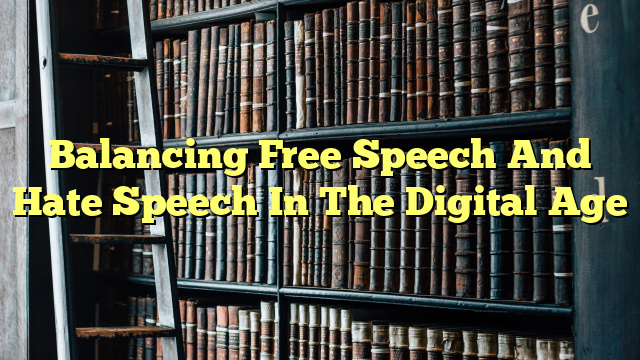Table of Contents
- Does the First Amendment Protect Hate Speech on Social Media?
- Why Shouldn’t Hate Speech Be Allowed on Social Media?
- How Is Free Speech Related to Hate Speech?
- Why Isn’t There Freedom of Speech Online?
Introduction
The Internet has become a powerful tool for communication, but with it has come a number of challenges in the digital age, particularly when it comes to balancing the right to free speech with the prevention of hate speech. This is a difficult balance to strike, as there is no universally accepted definition of hate speech and no clear line between free speech and hate speech. This article will examine the issue of balancing free speech and hate speech in the digital age, looking at various arguments on both sides, and exploring the implications of allowing such speech online.
Does the First Amendment Protect Hate Speech on Social Media?
The First Amendment of the United States Constitution guarantees the right to free speech, and this right is extended to social media platforms. However, the Supreme Court has ruled that hate speech is not protected by the First Amendment, as it can be seen as a form of inciting violence, which is not protected speech. Therefore, while free speech is protected on social media, hate speech is not, and it is up to the platform to determine what it considers to be hate speech and how to handle it.
Why Shouldn’t Hate Speech Be Allowed on Social Media?
Hate speech has no place on social media, or anywhere else for that matter. Such speech is offensive, hurtful, and can be used to incite violence. It can also be used to spread misinformation and can be a source of harassment, intimidation, and even cyberbullying. Allowing such speech to go unchecked can have real-world implications and can lead to serious and dangerous consequences.
How Is Free Speech Related to Hate Speech?
Free speech and hate speech are often confused, as the two are closely related. Free speech is protected by the First Amendment, whereas hate speech is not. Free speech is considered to be speech that is useful and constructive, while hate speech is speech that is intended to harm or intimidate a person or group. The two can often be difficult to distinguish, and it can be difficult to draw a clear line between the two.
Why Isn’t There Freedom of Speech Online?
There is no “absolute” freedom of speech online, as the platforms themselves are subject to various laws, regulations, and policies. Social media platforms have the right to regulate their own content and have the power to remove or restrict content that does not comply with their guidelines. Similarly, governments can also impose laws and regulations on social media platforms in order to protect citizens from harmful speech or content.
Conclusion
Balancing free speech and hate speech in the digital age is a difficult task, as there is no clear line between the two. The First Amendment protects free speech, but hate speech is not protected and is subject to the platform’s guidelines. It is up to the platforms to determine what they consider to be hate speech and how to handle it. Governments can also impose laws and regulations on social media platforms in order to protect citizens from harmful content.


The article explores the importance of balancing free speech with hate speech in the digital age. However, I suggest exploring improved social media moderation as another way to restore online positivity.